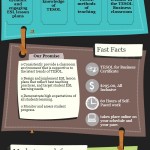Ah, the tongue! That soft, muscular marvel nestled inside your mouth is a star performer in the grand production of speech. Without it, you’d struggle to order a coffee, sing karaoke, or utter a heartfelt “I love you.” Often overlooked, the tongue is a linguistic hero—flexible, powerful, and endlessly expressive. Let’s dive into why this fleshy, versatile organ is so vital for human communication and explore the ensemble of body parts that make the magic of speech possible.
Why the Tongue is the MVP of Speech
The tongue isn’t just a taste-testing, ice cream-loving wonder; it’s also your speech MVP (Most Valuable Player). Here’s why:
- Articulation: The tongue shapes sounds by moving in tandem with the teeth, lips, and palate. Think of it as a sculptor, carving out the distinct sounds of speech from raw air vibrations.
- Versatility: From curling up for an “r” sound to flattening for a “t,” the tongue’s gymnastic abilities are unmatched. It even gets fancy with tongue twisters like “She sells seashells by the seashore.”
- Expression: Pair the tongue’s dexterity with its role in forming words, and you have a tool for storytelling, persuasion, and wit. (Who hasn’t stuck out their tongue for a little non-verbal sass?)
The Ensemble Cast: Body Parts That Make Speech Possible
While the tongue may steal the spotlight, it doesn’t work alone. Speech is a team effort, requiring the cooperation of various body parts. Here’s the star-studded cast:
- Lungs: The lungs are the powerhouse, providing the airflow that carries sound. Without air, there’s no voice—just an eerie silence.
- Diaphragm: This muscle controls the airflow, acting like a bellows. It ensures your sentences don’t trail off into a breathless whisper.
- Larynx (Voice Box): Home to your vocal cords, the larynx vibrates to produce sound. It’s the instrument that turns breath into a hum, laugh, or scream.
- Vocal Cords: These thin membranes adjust tension and length to create pitch and tone. They’re like the strings of a violin, producing the melody of your voice.
- Teeth: Your pearly whites are more than chewing tools. They work with the tongue and lips to create consonant sounds like “th” and “f.”
- Lips: Flexible and expressive, lips help form sounds like “p,” “b,” and “m.” Plus, they’re crucial for non-verbal communication (a well-timed pout says it all).
- Soft Palate: The soft palate rises and falls to direct airflow, helping distinguish nasal sounds like “m” from non-nasal ones like “b.”
- Hard Palate: The hard palate acts as a resonance chamber and works with the tongue to create sounds like “d” and “t.”
- Nasal Cavity: This space amplifies and shapes sounds, especially for nasal consonants like “n” and “ng.”
- Brain: The unsung director of this production, the brain coordinates all these moving parts. It plans what you’re going to say, sends signals to the muscles, and interprets the sounds you hear in response.
Fun Facts About the Tongue and Speech
- The tongue has eight muscles, working tirelessly to keep you chatting, eating, and humming.
- It’s one of the fastest-healing parts of the body, which is great news if you accidentally bite it.
- Speech involves over 100 muscles working in harmony—a true symphony of movement.
- Babies begin developing speech skills in the womb, recognizing their mother’s voice and rhythms.
Why Speech Matters
Speech is more than just a method of communication; it’s a cornerstone of human connection. From heartfelt confessions to belly-aching laughter, the ability to speak bridges gaps, fosters relationships, and builds communities. And at the heart of it all? Your trusty tongue and its hardworking teammates.
So, the next time you flawlessly deliver a punchline or win an argument, give a little thanks to your tongue and its collaborative crew. They’re the unsung heroes of human interaction, tirelessly working to keep us connected, expressive, and oh-so-entertaining.



